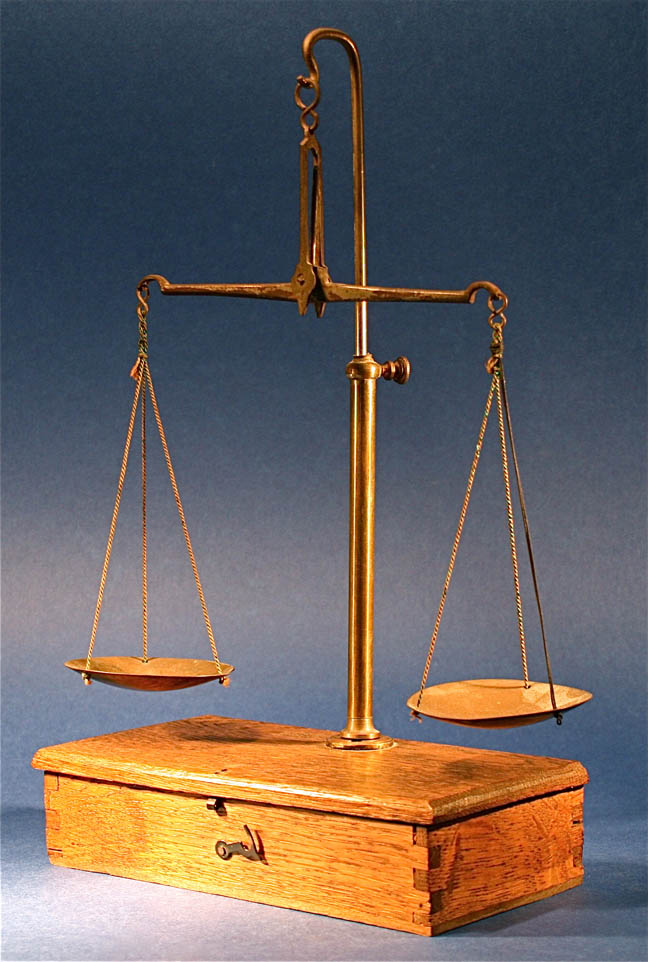

Title: Rare Antique Brass Display Field Gold Dust Scale
Shipping: $49.00
Artist: N/A
Period: 19th Century
History: N/A
Origin: N/A
Condition: Museum Quality
Item Date: 1830s to 1900s
Item ID: 5035
This vintage balance gold dust scale is complete. This Scale is made of wood and brass. It has two removable brass trays and wood storage box. In very good condition. Made around the 1850s After the discoveries of 1862, gold – dust, nuggets, and quartz ore – poured out of the mountainous gold Basin regions. Gold dust immediately became a preferred medium of exchange, as it always did in gold country. The metal has intrinsic value, of course, and can be doled out in widely varying amounts. However, the dust also suffers from some serious shortcomings. First, transactions require a set of scales and standard weights to measure the dust. Pioneers “invariably” carried their own devices, which were very precise and accurate. (A merchant caught with doctored scales would be in big trouble. Such transactions were complicated by the fact that not all gold dust was the same. The nominal value was $16 per ounce. However, dust from one placer area might be worth $12 per ounce while that from another might go $19. The circulation of bogus dust caused further doubt in such dealings. Private assayers provided a stopgap service by melting dust into gold bars of various sizes. Stamped with the weight, value, and assayer identification, these too could be used as a medium of exchange. However, such “currency” did not travel well … generally only as far as the assayers good reputation. Thus, by 1864, miners and businessmen alike were agitating for the establishment of a branch mint.
Link: http://en.wikipedia.org/wiki/Scale_%28weights_and_measures%29
A weighing scale, is a measuring instrument for measuring the weight or mass of an object. A balance compares the unknown weight to a standard weight using a horizontal lever. Weighing scales are used in many industrial and commercial applications, and products from feathers to loaded tractor-trailers are sold by weight. The balance (also balance scale, beam balance and laboratory balance) was the first mass measuring instrument invented. In its traditional form, it consists of a pivoted horizontal lever of equal length arms, called the beam, with a weighing pan, also called scale (hence the term "scales") scalepan, or bason (obsolete) suspended from each arm. The unknown mass is placed in one pan, and standard masses are added to the other pan until the beam is as close to equilibrium as possible. In precision balances, a slider weight is moved along a graduated scale. The slider position gives a fine correction to the weight value. Although a balance technically compares weights, not masses, the weight of an object is proportional to its mass, and the standard weights used with balances are usually labeled in mass units. Balances are used for precision mass measurement, because unlike spring scales their accuracy is not affected by differences in the local gravity, which can vary by almost 0.5% at different locations on Earth. A change in the strength of the gravitational field caused by moving the balance will not change the measured mass, because the moments of force on either side of the balance beam are affected equally. Very precise measurements are achieved by ensuring that the fulcrum of the beam is essentially friction-free (a knife edge is the traditional solution), by attaching a pointer to the beam which amplifies any deviation from a balance position; and finally by using the lever principle, which allows fractional masses to be applied by movement of a small mass along the measuring arm of the beam, as described above. For greatest accuracy, there needs to be an allowance for the buoyancy in air, whose effect depends on the densities of the masses involved. The original form of a balance consisted of a beam with a fulcrum at its center. For highest accuracy, the fulcrum would consist of a sharp V-shaped pivot seated in a shallower V-shaped bearing. To determine the mass of the object, a combination of reference masses was hung on one end of the beam while the object of unknown mass was hung on the other end. For high precision work, the center beam balance is still one of the most accurate technologies available, and is commonly used for calibrating test weights.